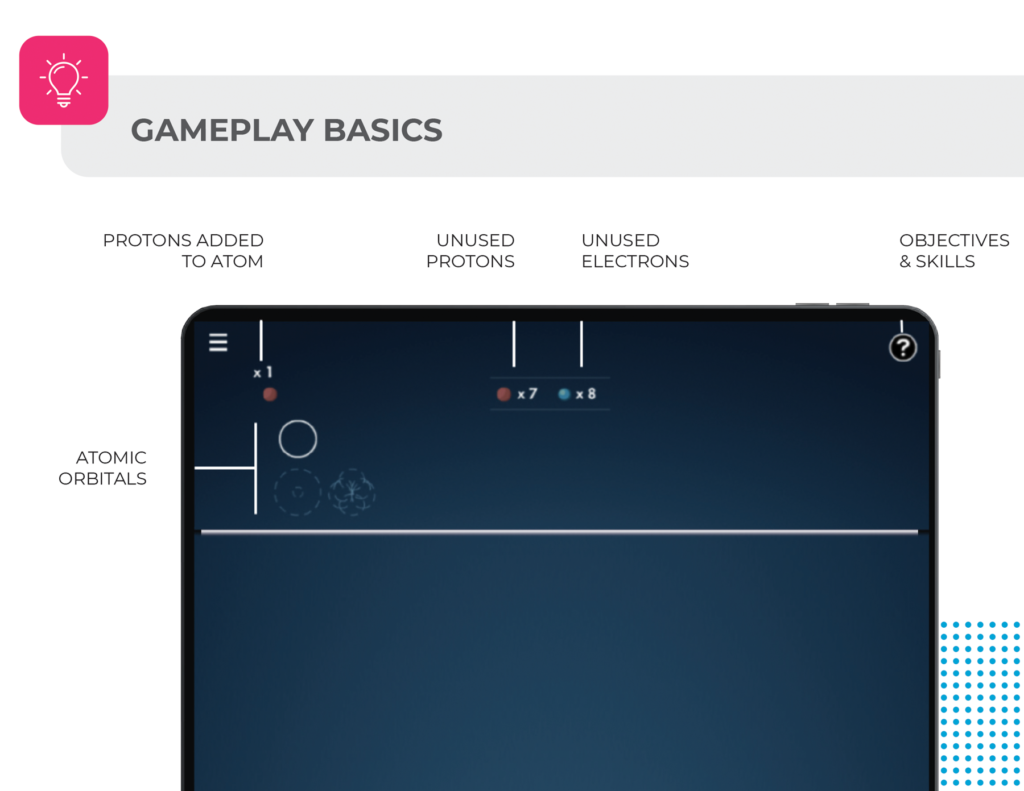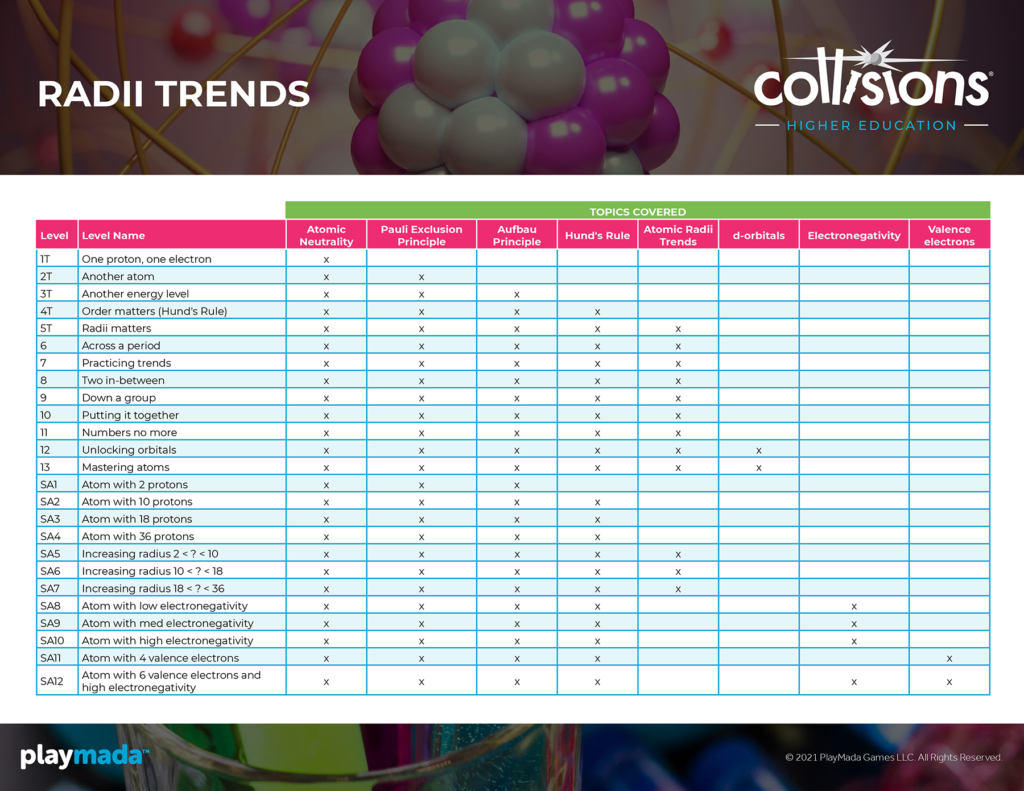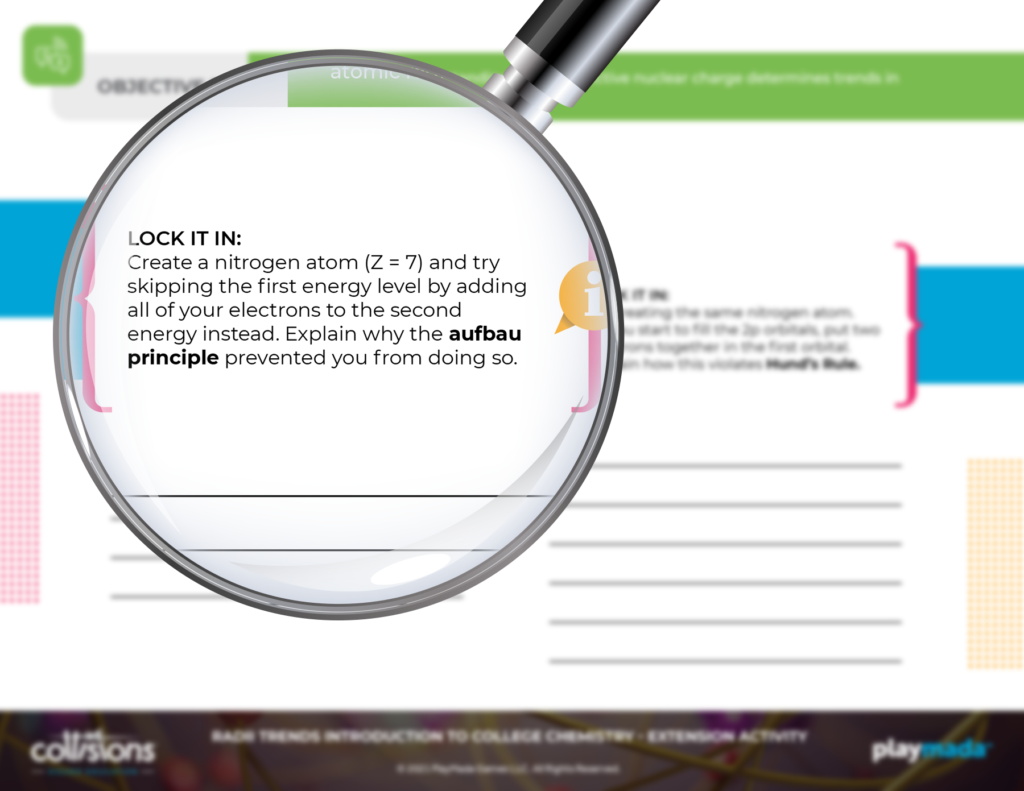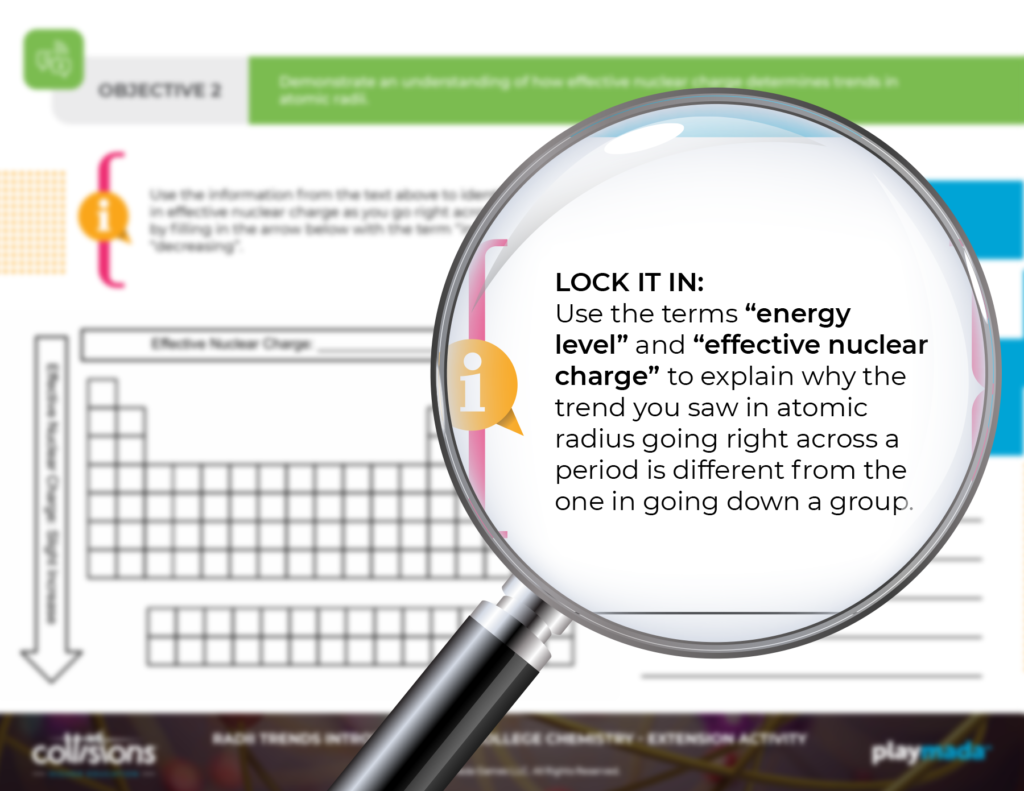Introductory chemistry courses are well known to pose significant difficulty to many undergraduates. Multiple studies have demonstrated that these courses often have high failure rates and could contribute to overall college attrition [1,2,3]. Research has also shown that even many students who master the calculations required in chemistry courses lack enough conceptual understanding to connect these calculations to visual representations of matter [4]. Both high failure rates and poor student conceptual understanding necessitate new resources for teaching college chemistry.
Collisions HE provides exactly the conceptual tool that higher education instructors need to support the diversity of learners in their classes. All eight content areas are designed to simply and accurately illustrate fundamental topics covered in first-year chemistry courses. The Chemistry Content Integration Guide lists most topics covered by each content area. Accompanying each content area are five resources developed to maximize their usefulness.
The Educator Quick Start Guides and Content Area Overviews highlight game features, while the Formative Assessments and Extension Assignments provide opportunities for students to demonstrate and extend their learning. A Detailed Topic Overview lists the specific topics covered within each level of each content area.
Each set of resources is leveled to accommodate two broad groups of courses.
Resources labeled “General Chemistry” are intended for use in courses intended as prerequisites for higher level chemistry courses (e.g. organic chemistry). Resources labeled “Introduction to Chemistry” are intended for general science courses, chemistry for non-majors, and other terminal chemistry courses.
Educator Quick Start Guide
This resource is intended to help instructors quickly integrate Collisions HE into their instruction. It highlights chemistry topics covered in the game and provides sample questions that can be used as checks for understanding. It is recommended that instructors reference this document as they play through the levels of the game in order to develop a pedagogical strategy.
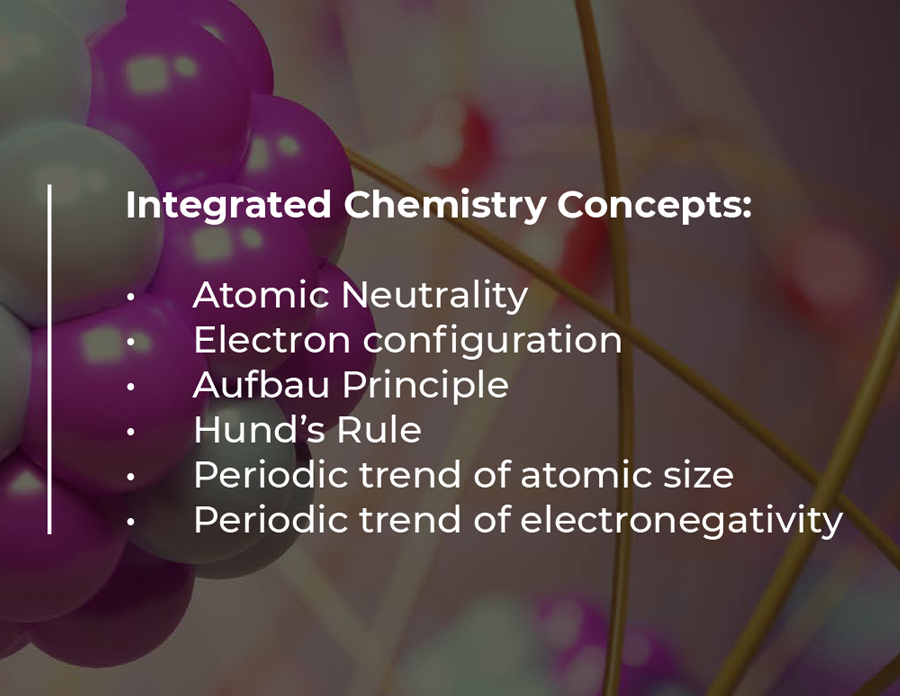
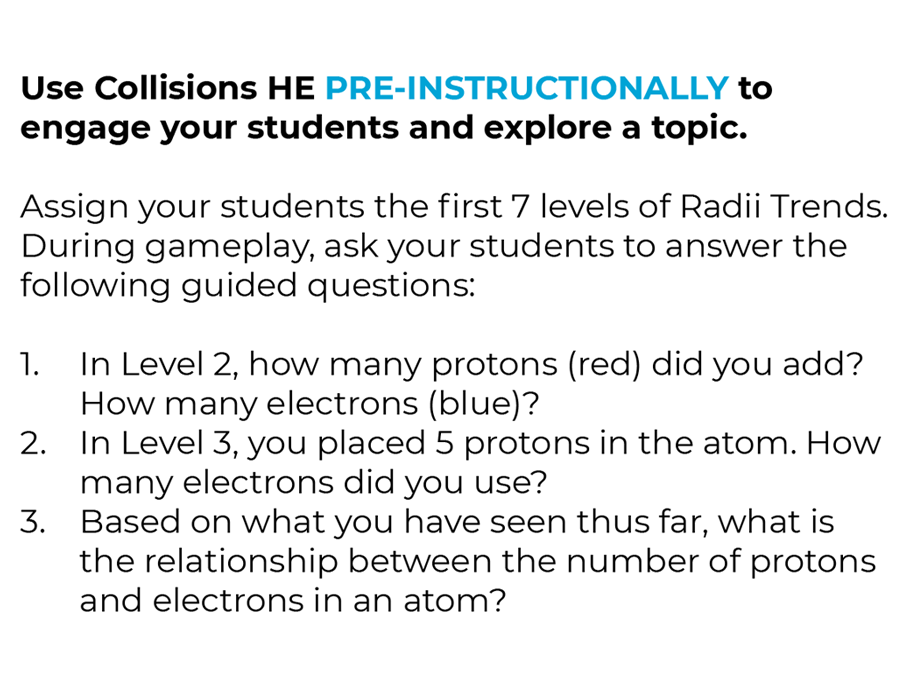
Content Area Overview
The Content Area Overview is a more detailed look at the elements of each game and can be thought of as the game instructions. This resource is particularly useful in the case one cannot figure out certain game functions. It is also useful for determining the appropriate name of different game features in order to provide clear instructions to students and more easily answer questions.
Formative Assessments
The formative assessments are intended to assess concepts that can be learned from gameplay alone, although they are still appropriate for use post-instructionally. All assessments are fillable PDFs and should require only a few minutes to complete. The answer keys for all formative assessments are provided.
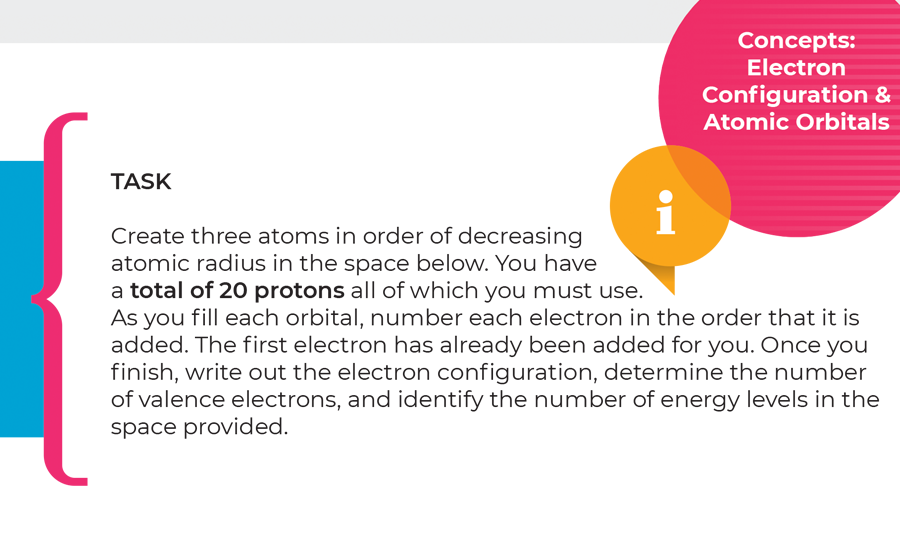
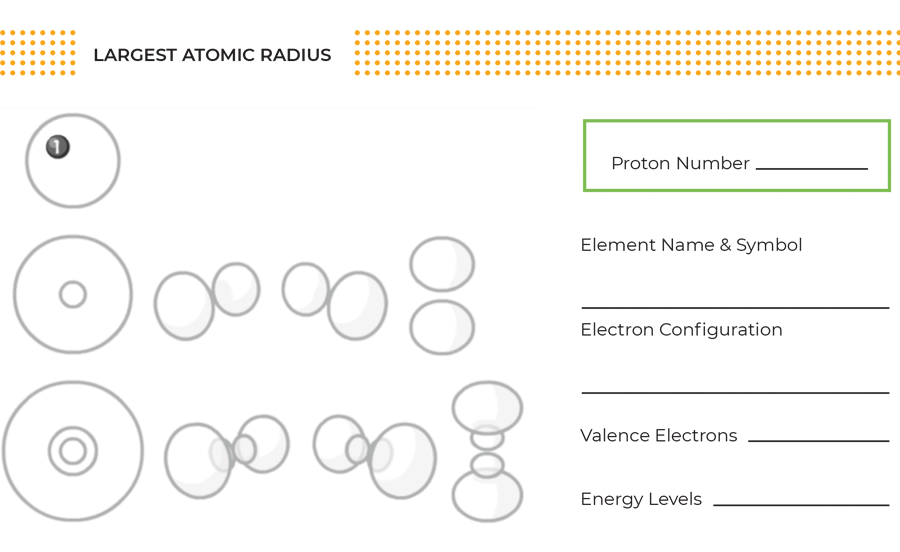
Extension Activities
The Extension Activities are crucial to students getting the full benefit of Collisions HE. Each assignment connects material covered in the game to topics covered in most college-level textbooks. Although these assignments can be completed without supplemental instruction or textbook reading, in some cases they assume student understanding of concepts and terms not directly mentioned in the game. As such, extension assignments might be more useful post-instructionally as homework or assigned in pieces with relevant textbook reading. The answer keys for all extension assignments are provided.
The more exposure students get to the Collisions HE games and resources, the greater their conceptual understanding will be. Find as many opportunities to integrate it into your courses as you can. We look forward to you and your students’ success!
References
- Allenbaugh, R. J., and K. M. Herrera. “Pre-Assessment and Peer Tutoring as Measures to Improve Performance in Gateway General Chemistry Classes.” Chem. Educ. Res. Pract., vol. 15, no. 4, 2014, pp. 620–627., doi:10.1039/c4rp00094c.
- Jones, K.B.; Gellene, G.I. Understanding attrition in an introductory chemistry sequence following successful completion of a remedial course. J. Chem. Educ. 2005, 82, 1241–1245.
- Stone, Kari, et al. “Improving the Success of First Term General Chemistry Students at a Liberal Arts Institution.” Education Sciences, vol. 8, no. 1, 2018, p. 5., doi:10.3390/educsci8010005.
- Prilliman, Stephen. “Integrating Particulate Representations into AP Chemistry and Introductory Chemistry Courses.” Journal of Chemical Education, vol. 91, no. 9, 2014, pp. 1291–1298., doi:10.1021/ed5000197.
Author: Jarred Phillips
PlayMada: Collisions HE


